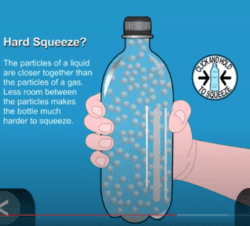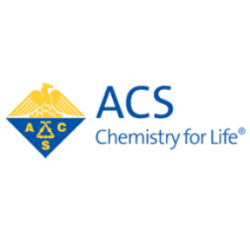Students squeeze a flexible plastic bottle filled with air and another filled with water to investigate the questions: Is an “empty” bottle really empty? and Can you force the molecules of a gas or a liquid to be closer together?
Objective
Students will develop a model to describe that matter is made up of tiny particles, too small to be seen. Students will use the model to describe the differences in attraction among the particles of a solid, liquid, and gas. Finally, students will use their models of solids, liquids, and gases to explain their observations in the lesson.
Key Concepts
- Matter on Earth is in the form of solid, liquid, or gas.
- Solids, liquids, and gases are made of tiny particles called atoms and molecules.
- In a solid, the particles are very attracted to each other. They are close together and vibrate in position but don’t move past one another.
- In a liquid, the particles are attracted to each other but not as much as they are in a solid. The particles of a liquid are close together, always moving, and can slide past one another.
- In a gas, the particles have very little attraction to each other. They are very far apart compared to the particles in a solid or liquid, and are constantly moving. The particles don’t interact with one another but just hit and bounce off of each other when they collide.
NGSS Alignment
- NGSS 5-PS1-1: Develop a model to describe that matter is made of particles too small to be seen.
Summary
- Students are introduced to the idea that matter is made up of tiny particles called atoms and molecules.
- Students observe a solid metal hammer and a nail and view a molecular model animation of the particles in a solid.
- Students squeeze a flexible plastic bottle with a balloon on top of the bottle to develop a model of the particles of a gas.
- Students also try to squeeze a bottle filled with water to develop a model of the particles of a liquid.
- Students watch a short animation that illustrates the incredibly tiny size of atoms and molecules.
- Finally, students make an argument that even though a mound of shaving cream keeps its shape, it is not a solid, and that even though sand takes the shape of its container, it is not a liquid.
Evaluation
Print the student activity sheet and distribute one per student when specified in the activity. The activity sheet will serve as the Evaluate component of the 5-E lesson plan.




